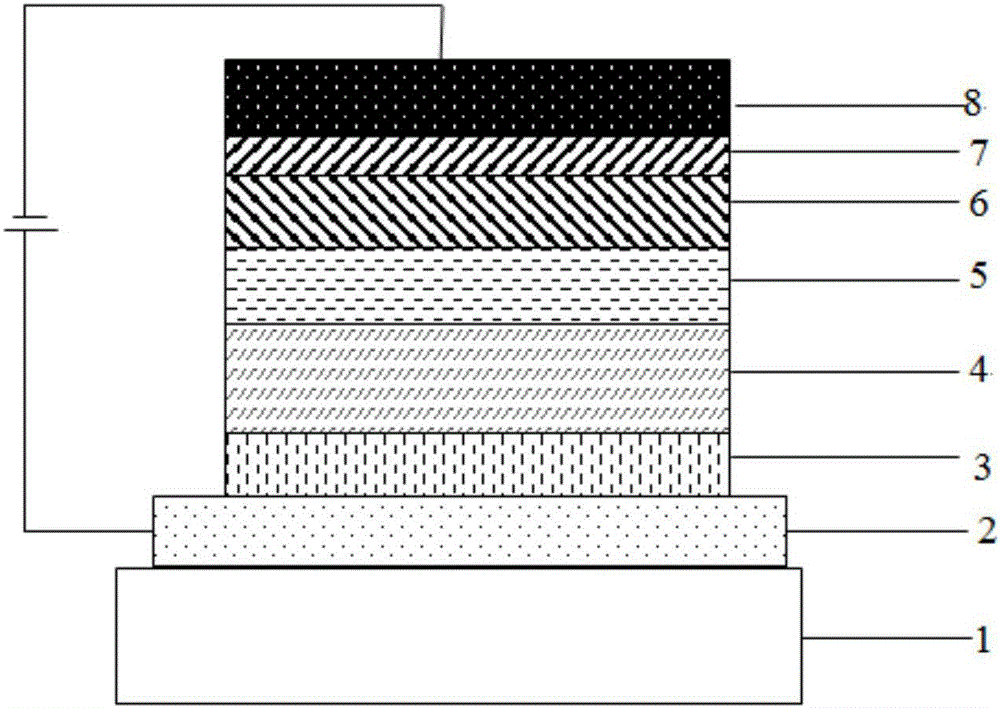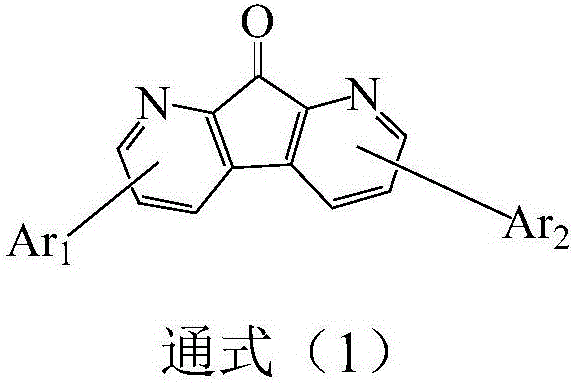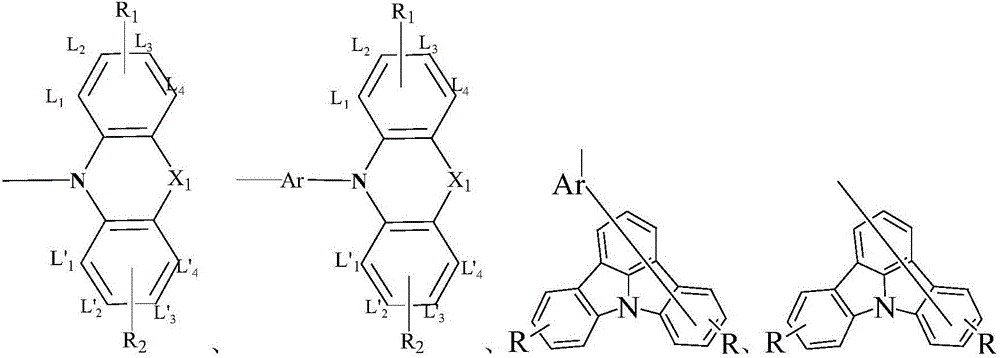Compound based on 1,8-diazafluoren-9-one and application of compound
A compound, diaza technology, applied to compounds containing 1,8-diaza-9-fluorenone, the application field of organic electroluminescent devices, can solve the problem of efficiency roll-off, low S1 state radiation transition rate , Difficult exciton utilization and high fluorescence radiation efficiency, etc., to achieve the effect of increasing orbital overlap, good industrialization prospects, and avoiding aggregation
- Summary
- Abstract
- Description
- Claims
- Application Information
AI Technical Summary
Problems solved by technology
Method used
Image
Examples
Embodiment 1
[0051] Example 1 Compound 1
[0052] The concrete synthetic route of this compound is provided now:
[0053]
[0054] Add 0.01mol 3,6-dibromo-1,8-diaza-9-fluorenone, 0.025mol 10H-phenoxazine, 0.03mol sodium tert-butoxide to a 250ml four-necked flask under nitrogen atmosphere , 1×10 -4 mol Pd 2 (dba) 3 , 1×10 -4 mol of tri-tert-butylphosphine, 150ml of toluene, heated to reflux for 24 hours, sampling plate, the reaction was complete; naturally cooled, filtered, the filtrate was rotary evaporated, and passed through a silica gel column to obtain the target product with a purity of 99.2% and a yield of 75.00%.
[0055] Elemental analysis structure (molecular formula C 35 h 20 N 4 o 3 ): theoretical value C, 77.20; H, 3.70; N, 10.29; O, 8.81; test value: C, 77.29;
[0056] HPLC-MS: The molecular weight of the material is 544.15, and the measured molecular weight is 544.62.
Embodiment 2
[0057] Example 2 Compound 4
[0058]
[0059] The preparation method of compound 4 is the same as that of Example 1, except that the raw material 9,10-dihydro-9,9-dimethylacridine is used instead of 10H-phenoxazine.
Embodiment 3
[0060] Example 3 Compound 7
[0061] The concrete synthetic route of this compound is provided now:
[0062]
[0063] In a 250ml four-necked flask, add 0.01mol 3,6-bis-(4-bromophenyl)-1,8-diaza-9-fluorenone, 0.025mol 5-phenyl -10-hydrophenazine, 0.03mol sodium tert-butoxide, 1×10 -4 molPd 2 (dba) 3 , 1×10 -4 mol of tri-tert-butylphosphine, 150ml of toluene, heated to reflux for 24 hours, sampled and plated, the reaction was complete; naturally cooled, filtered, the filtrate was rotary evaporated, and passed through a silica gel column to obtain the target product with a purity of 99.5% and a yield of 72.00%.
[0064] Elemental analysis structure (molecular formula C 59 h 38 N 6 O): theoretical value C, 83.67; H, 4.52; N, 9.92; O, 1.89; tested value: C, 83.73; H, 4.39; N, 9.90;
[0065] HPLC-MS: The molecular weight of the material is 846.31, and the measured molecular weight is 846.40.
PUM
 Login to View More
Login to View More Abstract
Description
Claims
Application Information
 Login to View More
Login to View More - R&D
- Intellectual Property
- Life Sciences
- Materials
- Tech Scout
- Unparalleled Data Quality
- Higher Quality Content
- 60% Fewer Hallucinations
Browse by: Latest US Patents, China's latest patents, Technical Efficacy Thesaurus, Application Domain, Technology Topic, Popular Technical Reports.
© 2025 PatSnap. All rights reserved.Legal|Privacy policy|Modern Slavery Act Transparency Statement|Sitemap|About US| Contact US: help@patsnap.com



